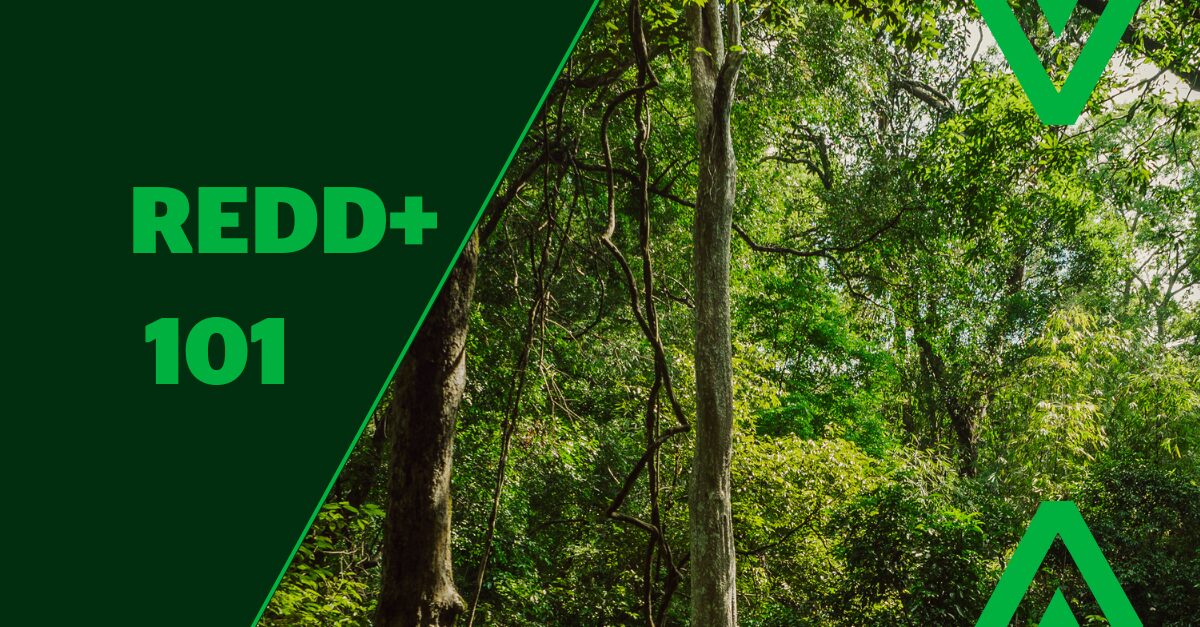
Carbon offsets refer to either the increase in carbon storage or a reduction in greenhouse gas (GHG) emissions compared to what would have occurred in a business-as-usual scenario. These offsets are quantified and certified in the form of metric tonnes of carbon dioxide equivalent (tCO2e), to be ultimately monetized and sold or transferred to compensate for unavoidable GHG emissions – referred to as carbon offset credits or Verified Emissions Reductions (VERs). The accurate quantification of credits is vital to ensure a net climate benefit is achieved – that an VER tonne represents a real tonne of CO2e being removed from the atmosphere.
The REDD+ mechanism fits under the reduced GHG emissions credit type, representing a measurable reduction in deforestation and/or forest degradation within an at-risk forest landscape. REDD+ credits are generated by comparing a baseline (business-as-usual) scenario to an intervention (REDD+) scenario through the lifetime of a project.
A REDD+ baseline scenario is used to predict the rate of forest change that would occur within a landscape in the absence of REDD+ forest conservation; this rate is then used to calculate the likely business-as-usual release of GHG emissions that would occur. These scenarios are reassessed every decade (i.e. re-baselining).
On the other side of the equation, REDD+ developers must predict the likely forest change they expect to occur in the REDD+ protection (intervention) scenario over the lifetime of the project. Given the complexity of reducing deforestation drivers within a landscape, REDD+ projects do not completely eliminate the actual deforestation occurring but reduce it compared to the baseline.

At the time of project initiation, the REDD+ intervention scenario is simply a prediction. The actual forest change that occurs within the project area is continuously monitored and verified throughout a project’s lifetime as a basis for carbon offset generation via the actual avoided deforestation.
Project-Based REDD+
A REDD+ baseline scenario has historically required the definition of a Reference Region (RR) as a control for the project area to estimate what would likely occur in the absence of REDD+. An RR is an area of forested land located near the REDD+ project, with similar socioeconomic, political and ecophysiological characteristics and thus at risk from the same drivers of deforestation. The Verified Carbon Standard (VCS) has allowed for a series of different methodologies to be used to predict the baseline rate of deforestation from the RR – the applicability of which depends on the local context. All methodologies use the historic (~10 year) deforestation rate in the RR as a basis for modeling future deforestation using a few different mathematical models (see figure).

Jurisdictional REDD+
More recently, the VCS REDD+ mechanism is moving towards a jurisdictional method to develop project baselines. In this method, average historic GHG emissions from forest change within a jurisdiction (state/province or national level) are estimated and used to produce an annual emissions reductions cap covering a defined validity period (e.g. 10 years; see figure below). The emissions cap is then allocated to a project-level using an area-based or risk-based approach.

Existing VCS REDD+ projects will be required to convert from project-based to jurisdictional baselining within the coming years. Given the divergent nature of the two methods, it could result in slight variations in the annual emissions reductions that can be achieved by individual projects.